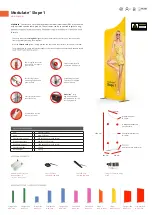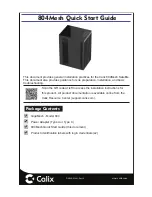
29
Fig. 6.4.a
6.5 Unfurling the sail
6.6 Furling the sail
1. Release the furling line and the windward genoa sheet. Allow these to run freely while the sail is being
unfurled.
2. For a controlled unfurling manoeuvre, it is best to place a turn of the furling line around a winch or a half-
turn around a cleat. This induces some drag, which is particularly useful in stronger winds.
3. Place a turn of the leeward genoa sheet around a winch and unfurl the sail by pulling in the sheet. Once the
wind catches the sail it will unfurl more easily. The best point of sail for unfurling is between close reach
and beam reach, as the wind will then fill the sail quickly.
4. Place a few more turns of the sheet around the winch and sheet the sail in to the desired trim.
1. Release the windward sheet and ensure that it can run freely.
2. Furl the sail by pulling the furling line. Release the leeward sheet but keep a little tension on it, for example
by placing a turn around a winch. It is important to furl the sail tightly and evenly, as a sail which is furled
too loosely can blow out a little in strong winds. If the boat is left unattended, the sail may flap until it tears.
A very loosely furled sail may also cause unnecessary wear, as the sail roll will swing back and forth in the
wind.
3. Belay the furling line carefully. If the boat is left unattended, the furling line should be belayed on a cleat
for safety.
If the furling line is accidentally released, the sail may unfurl and flap without control in
strong winds. If left for any length of time, it will be damaged beyond repair!
If the boat is left for a long period of time, it is a good idea to take down the sail and stow it below deck.
It is then protected from UV radiation and dirt. Alternatively, a sail cover (”furling sock”) can be used to
protect the sail.
14. When the sail is hoisted, check that the halyard swivel is at least 50 mm below the
top guard and that the halyard angle satisfies the 10–15° requirement.
15. Finally, mark the halyard as shown to prevent overtensioning. This is very
important! Also mark the maximum tension position of any backstay adjuster.
The forestay/backstay tension can now be adjusted without putting too much
strain on the halyard.
















































